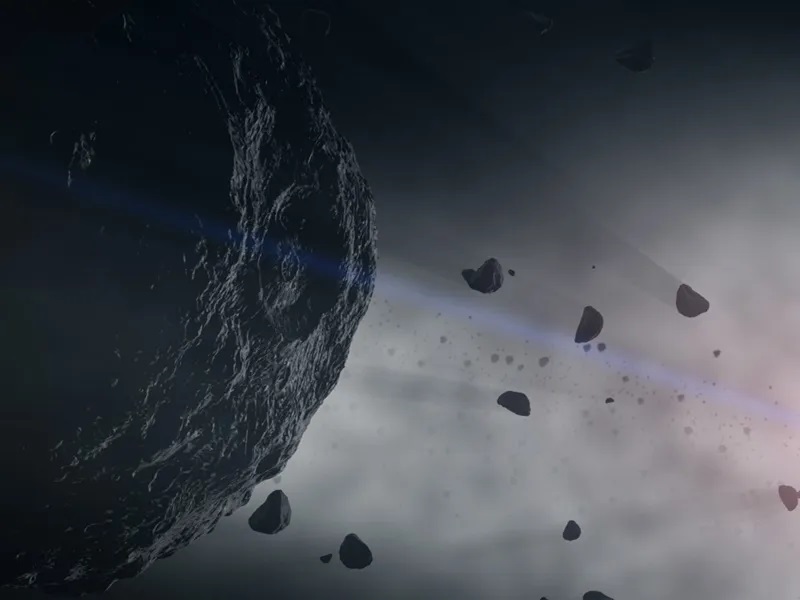“Interpreting the data we see from tracking Bennu has the potential to add to our understanding of the theoretical underpinnings of the universe, potentially revamping our understanding of the Standard Model of physics, gravity and dark matter,” said Yu-Dai Tsai, lead author on the paper. “The trajectories of objects often feature anomalies that can be useful in discovering new physics.”
Given the implications for planetary defense, near-Earth asteroids are closely tracked. The team applied that ground-based tracking data collected before and during the OSIRIS-REx mission to a probe of extensions of the Standard Model of physics, which describes three of the four known fundamental forces of the universe. Optical and radar astrometric data has helped constrain — or establish to a degree of precision — the trajectory of Bennu since it was discovered in 1999. The OSIRIS-REx mission contributed X-band radiometric and optical navigation tracking data.
“The tight constraints we’ve achieved translate readily to some of the tightest-ever limits on Yukawa-type fifth forces,” said Sunny Vagnozzi, assistant professor at the University of Trento in Italy, and co-author on the paper. “These results highlight the potential for asteroid tracking as a valuable tool in the search for ultralight bosons, dark matter and several well-motivated extensions of the Standard Model.”
Anomalies lead to discoveries
The trajectory of a celestial object is impacted by gravity and other factors. Understanding the physics of trajectories can reveal mysteries, especially where there are anomalies in the trajectory. Famously, long before it was actually observed, the planet Neptune was inferred by observations of irregularities in the orbit of nearby planet Uranus.
Using trajectory data and resulting modeling from the tracking of Bennu, the teams’ analysis established constraints on a possible fifth force and the role of a potential mediating particle, such as an ultralight boson, in that fifth force. The presence of a mediating particle that might act upon a fifth force would show up in the altered orbit of an asteroid like Bennu, which is why studying the tracking data is so significant for physics.
A new particle such as an ultralight boson might represent an extension of the Standard Model to include dark matter and dark energy, which are strongly suggested by cosmological and astrophysical observations but have not yet been incorporated into the general framework. While dark matter is thought to make up perhaps 85% of the total matter in the universe, science remains unsure as to what particles and forces make up dark matter.
Next stop: Apophis
Tsai and others first explored the probing of fifth-force physics with asteroids with research published in the Journal of Cosmology and Astroparticle Physics in 2023, before tackling Bennu. The team plans to build on their Bennu work in the future with the tracking of the Apophis asteroid, which will pass within 20,000 miles of Earth in 2029. NASA’s OSIRIS-APEX spacecraft will approach the asteroid and kick up dust. That and observations of the impact of Earth’s gravity on Apophis as it sails by will provide data to continue the search for fifth-force physics.
The team is considering new space quantum technologies and dedicated space missions to improve tracking precision or directly search for dark matter.
Paper: “Constraints on fifth forces and ultralight dark matter from OSIRIS-REx target asteroid Bennu.” Communications Physics. DOI: 10.1038/s42005-024-01779-3
Funding: This research was supported by the U.S. Department of Energy, by the National Science Foundation, and by the Laboratory Directed Research and Development program at Los Alamos.
###



